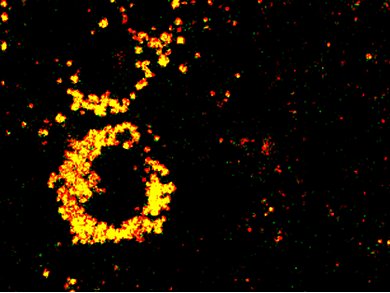Countless mice, rats and rabbits die every year in the name of science – and the situation is getting worse. The majority were used for researching diseases and developing medical compounds and devices.
Researchers around Jennifer Schmidt, Fraunhofer Research Institution for Modular Solid State Technologies EMFT, Munich, Germany, take living cells, which were isolated from human and animal tissue and grown in cell cultures, and expose them to the substance under investigation. If a given concentration of the substance is poisonous to the cell, it will die. This change in “well-being” can be rendered visible by sensor nanoparticles. The nanosensors detect adenosine triphosphate (ATP). High levels of ATP are indicative of high levels of metabolic activity in cells. If a cell is severely damaged, it becomes less active, storing less energy, and consequently producing less ATP.
In order for the nanoparticles to register the ATP, researchers give them two fluorescent dyes: a green indicator dye that is sensitive to ATP, and a red reference dye that does not change color. The degree to which the particles light up under a fluorescence microscope depends on the quantity of ATP present. The more yellow is visible in the overlay image, the more active are the cells. If their health were impaired, the overlay image would appear much redder.
Image: © Fraunhofer EMFT




